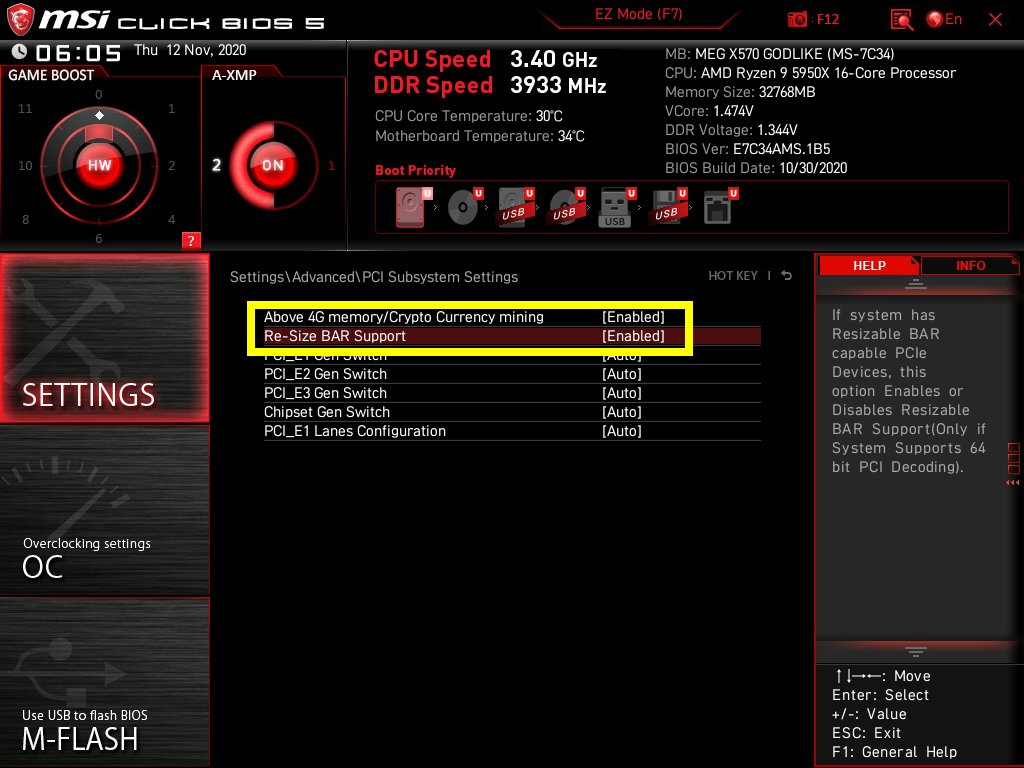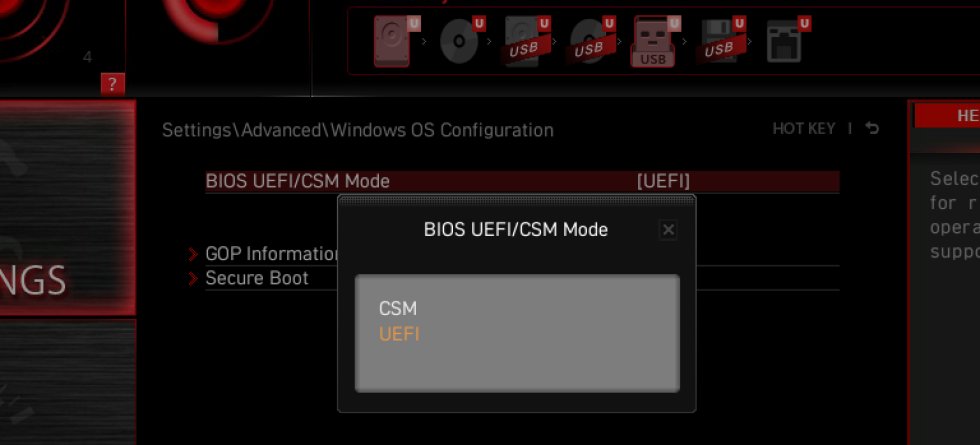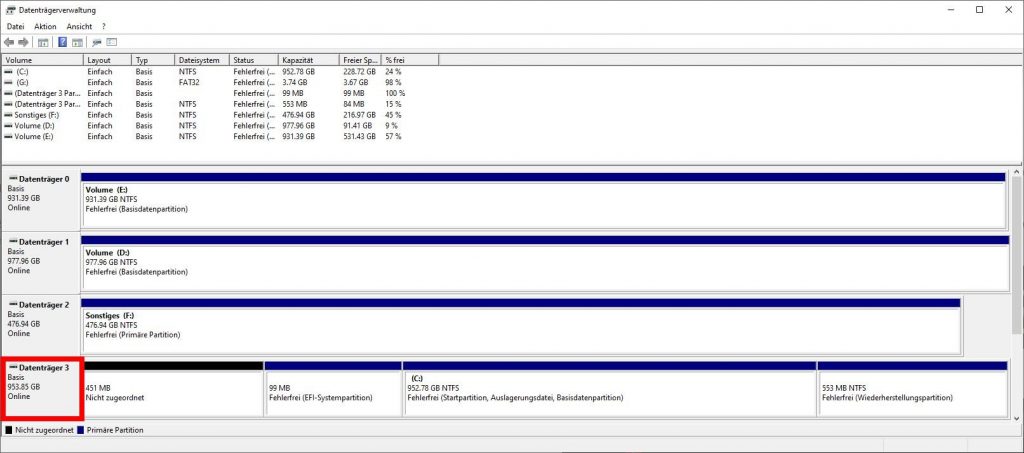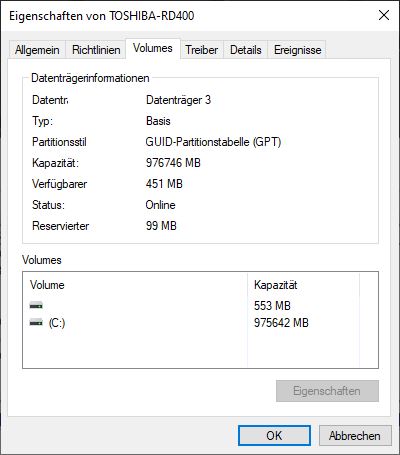Currently, there are many patches, new BIOS versions and various minor teething troubles with selected motherboard and CPU configurations, for example regarding the maximum achievable fabric clock rate. Unfortunately, most people quickly forget about a problem that could disturb the new Holy Trinity of motherboard, CPU and graphics card: certain basic BIOS settings and a Windows installed inappropriately. After the announcement of the new Radeon features by AMD’s CEO Dr. Lisa Su, a problem remains unmentioned that could well have its revenge in everyday life. To avoid disappointment about a feature that might be “missing”, we should definitely talk about it BEFORE.
SAM needs a resizable PCI BAR, but what is that actually?
At the presentation of the new Radeon cards, AMD also showed SAM, or Smart Access Memory. This is nothing else but the clever use of the Base Address Register (BAR) and exactly this support must be activated. With modern AMD graphics hardware, size-adjustable PCI Bars (see also PCI SIG from 24.0.4.2008) play an important role, since the PCI BARs are normally limited to 256 MB, while the new Radeon graphics cards offer up to 16 GB VRAM. The consequence is that only a fraction of the VRAM is directly accessible to the CPU, which requires a number of workarounds in the so-called driver stack. This of course always costs performance and should therefore be avoided. So that’s where AMD comes in with SAM. This is not new, but must be implemented cleanly in the UEFI and activated later. This in turn only works if the system is running in UEFI mode and CSM/legacy is deactivated.
More must not be revealed for reasons of existing NDAs, but the appropriate document of the PCI SIG has been publicly available since 2008 and this is exactly what I am referring to. Interested readers are welcome to browse here.
ECN_Resizable-BAR_24Apr2008
Does Windows run in UEFI mode in Windows or not?
With the graphical interface, a UEFI (Unified Extensible Firmware Interface) can be operated much more conveniently than the older BIOS and also offers significantly more functions. The UEFI ensures that after the PC is switched on, its components are correctly recognised and this is exactly what becomes important. But was the operating system, i.e. your Windows, really installed in UEFI mode? Some motherboard manufacturers have already selected (and specified) UEFI in the default settings at delivery, while other manufacturers use the so-called CSM mode as default. And that’s when it gets gross.
MBR instead of GPT, what now?
With the disk management of Windows the conversion to GPT unfortunately does not work at first. So what to do? With the Aomei Partition Assistant Standard it works anyway, even in the free version. This software converts your MBR drive to a GPT drive, even if Windows is on it. Nevertheless, this is only possible with a few tricks, because as long as Windows is running from this system disk, nothing works with it.
Now you either have to remove the hard disk and copy it to another computer with the tool, because then it is not a system disk there, or you create a bootable recovery CD directly under Aomei Partition Assistant Standard, which then contains the tool, and finally perform the conversion over it. That the UEFI mode only works with 64-bit Windows should of course be clear to everyone.
Concluding remark
If you’ve always wanted to reinstall your Windows, now you finally have a solid reason. So get into the BIOS, activate UEFI (thus deactivating CSM) and reinstall Windows after the reboot. And don’t forget to first delete all existing partitions completely during the setup process. But I do have one small side note after all. Those who still use very old components that are not compatible with the UEFI have been unlucky in this respect. So please check first, then it also works with SAM, oops, the Resizeable BARs.
By the way, NVIDIA is also working on a solution to this problem, so even the green hardware junkies will be allowed and even required to think about UEFI and their Windows. It’s about time anyway. The rest is then readable in the launch review. So keep at it!
Update and NVIDIA Statement
The capability for resizable / larger BAR is part of the PCI Express specification. NVIDIA hardware supports this functionality and will enable it on Ampere GPUs through future software updates. We have it working internally and are seeing similar performance results. Stay tuned.




































Kommentieren